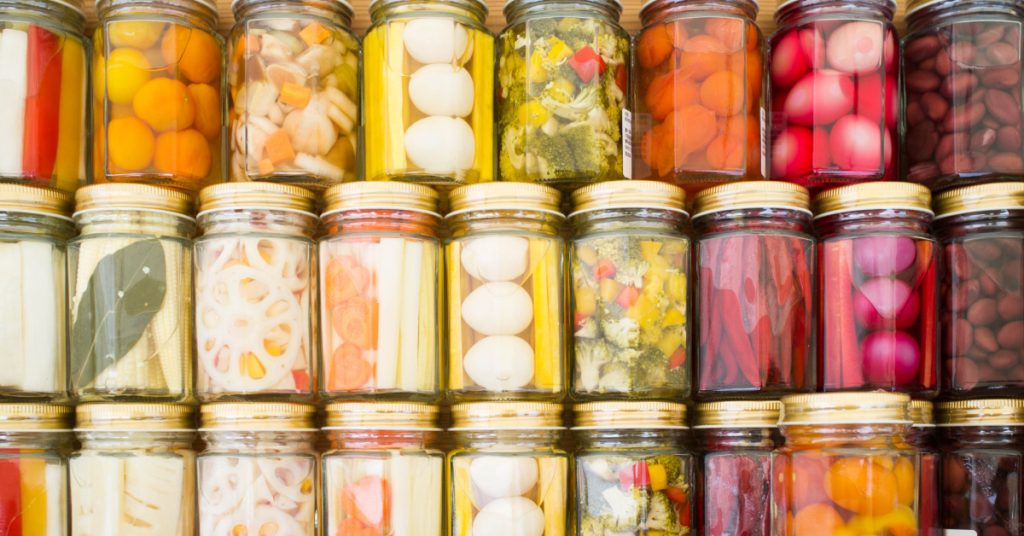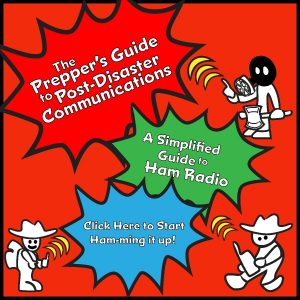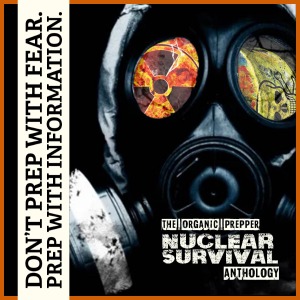If you're new here, you may want to subscribe to my RSS feed. Thanks for visiting!
Author of Be Ready for Anything and Bloom Where You’re Planted online course
Every few years, somebody proudly posts how they used their Instant Pot to home-can green beans or beef stew and saved a fortune by not buying a real pressure canner. The post gets widely circulated around Facebook, Instagram, and X (the actual misinformation they don’t censor) and people think this is A-OK and a great idea for them to.
It’s not A-OK. It’s not even B-OK.
It’s not safe at all.
Instant Pots and other countertop pressure cookers are great for getting a meal on the table fast. But for all the people asking if you can use them for pressure canning low-acid foods, the answer is a decisive NO.
It’s not really their fault – some pressure cookers have an insert that say they’re good for pressure canning. That is absolutely untrue.
About pressure canning
First, let’s backtrack to some pressure canning 101. If you plan to preserve meat or vegetables, they must be pressure canned because of their low acid content. Low-acid foods have to be preserved at a higher temperature than high-acid foods. The low-acid environment welcomes the growth of bacteria like botulism, a form of food poisoning that can cause permanent nerve damage or even death.
Pressure canning exceeds the temperature of water bath canning, getting your product into the safety zone. The temperature must reach 240 degrees Fahrenheit, which can only be achieved through steam under pressure. All vegetables (except for tomatoes which are botanically a fruit), meats, seafood, and poultry, must be preserved in a pressure canner.
Pressure canners and pressure cookers aren’t the same things.
First, to be clear: There is only ONE LEGITIMATE COUNTERTOP PRESSURE CANNER OUT THERE that I know of and would recommend.
Pressure cookers are not pressure canners. They don’t reach and maintain the pressure you need for safe canning.
A lot of folks think that using a pressure cooker for canning foods will work and part of this is because of the incorrect information included in the package of the cookers. According to Food Safety News:
Some manufacturers of electric multi-cooker appliances have been including directions for home canning with their products since they began marketing them, according to the National Center for Home Food Preservation. The companies have not done process development work to document temperatures throughout the units remain at a given pressure and throughout the whole process time, according to the Center. (source)
But pressure cookers haven’t been proven by the National Center for Food Preservation to reach and maintain the correct temperatures to keep your food safe.
“A common misconception about home canning is that the goal is to get the jar to seal. While having a strong seal is important, the most critical factor is whether the food inside the jar is safe to consume,” according to information from Penn State. “When food is heated inside the jar during the canning process, factors such as the density of the food, size of the food pieces, and size of the jar are figured into the process calculation.
“The entire thermal process including the heat-up to cool-down steps contribute to the destruction of harmful microorganisms. Electric multi-cookers tend to heat up and cool down quickly. Since heat transfer has not been specifically studied in this environment with this type of appliance, it is not recommended to use the canning feature of electric multi-cookers.”
…“We do not know if proper thermal process development work has been done in order to justify the canning advice that is distributed with these pressure multi-cooker appliances. What we do know is that our canning processes are not recommended for use in electric pressure multi-cookers at this time,” according to the center.
The center does have instructions for the public on proper canning techniques using stove-top pressure cookers, but those instructions to not apply to electric multi-cooker appliances. Even if such cookers have buttons or settings for “canning” or “steam canning” the devices should not be used for such purposes.
“Bacteria are not killed in the food only during the process time; the time it takes the canner to come up to pressure, the process time, and the cool-down time all matter,” according to the center. (source)
It’s just not worth the risk when you can get a pressure canner for less than $100.
Get The Prepper’s Canning Guide
Read: How to Pressure Can When You Have a Glass Top Stove
There are no shortcuts in canning.
There aren’t any shortcuts in canning. Just ask the Washington man who ended up paralyzed by botulism after consuming some improperly canned game.
Let me be as clear as possible. THERE ARE NO SHORTCUTS IN CANNING. You have to do things properly, adhering to tested methods that result in the safest possible product. Would you risk the above scenario happening to your child, all because you don’t want to use a pressure canner? It’s really not difficult at all. The Prepper’s Canning Guide provides simple, step-by-step instructions that will walk you through the methods of making your home-preserved food as safe as possible.
We have the equipment available to make things far safer than Grandma did. The refusal to use it would be like refusing to put your infant in a car seat or refusing to ask your toddler to buckle up in the car. We know these things are safe, so we do them, despite the fact that most of us survived many a car ride standing on the center armrest of the front seat, gleefully watching the road ahead while keeping one hand on the parent beside us for balance.
I strongly encourage the home preservation of food. It’s simple, inexpensive, and fun. Just do it safely, follow instructions, and remember, THERE ARE NO ACCEPTABLE SHORTCUTS IN CANNING. Just because your great-grandmother didn’t die from botulism, it doesn’t mean you or your loved ones won’t. It’s simply not worth the risk.














20 Responses
I have the Carey electric pressure canner. I am not paying for the presto their electric is ridiculously priced.
I’m not familiar with that one – I agree that the Presto one is out of reach for me!
I also have the Carey and have absolutely loved it. I prefer the smaller batch canning, as I can simply do a batch, clean up, and be about my day.
Yes, this! Plus no babysitting. I can actually go grab the mail, take the veggie scraps out to the chickens and not worry.
This article came at the perfect time as I’m researching different canning methods. We moved a couple months ago and to my dismay we now have an electric stove vs gas that I’ve always had before. I didn’t realize until after I already ordered 20lbs of cherries that most electric ranges aren’t canning friendly. Something to do with how it regulates the temp by shutting off and on? So until I can get converted to gas I’m Looking for alternatives. Has anyone tried the Ball easy canner? For now I will only be canning things like jam and salsa.
Is it the kind of stove with coils or is it a glass top? I have used the coiled kind for years and honestly prefer them for canning.
It’s the glass top kind. From my research I did see a lot of people recommending just the single coil burners that you plug in as an option.
I have an article about that topic – I’ve run into the same issue myself with a rental. https://www.theorganicprepper.com/pressure-canning-with-a-glass-top-stove-3-solutions/
Awesome! I’ll check that out now. Thanks!
I have a Ball Easy Canner. It is very convenient. I like it cause I am able to can in our destination trailer we have parked in Lancaster county PA where we can take advantage of all the Amish road side stands and their fresh fruit. Again it is only for water bathing. My sister gifted me it last summer.
Used a waterbath on a glass top stove a number of times. Takes FOREVER to get up to temp, but worked. Seals held TIGHT for 7+ years.
Even the newer coil stoves have issues with high heat. I had to buy new coils suitable for canning so that my pasta didn’t end up on a turned-off burner – as well as being able to can on it.
Was quite a shock as my other (older) coil stove had no problems maintaining a high heat for extended time. The local appliance dealer has the canning coils hanging on the wall.
You can safely can in a waterbath canner on your electric (even glass top) stove. You simply need a pot deep enough to cover the top of your jars with 1-2″ of water PLUS additional space needed for the expansion of water as it boils. This means you are able to safely can all acidic foods, which includes fruits (cherries!), tomatoes, salsa, pickles, jams and jellies. Do be careful to use tested recipes, and with tomatoes, you’ll likely need to add additional acid (lemon juice).
I should mention I do not use a traditional waterbath canner. I use a deep pot. I think mine was intended for lobster or something similar. Look for deep, not wide.
There are other ways to get water to 240 degrees without using pressure. Antifreeze added to the water, and checked with a radiator hydrometer, will raise the boiling temp to as much as 270 degrees. Also, you can skip the water bath and use cooking oils. They can get to over 400 degrees if you want.
People think they have to buy an All American type pressure canner that is very expensive, but unless they are canning for a large family, unnecessary. I bought a Mirro brand almost 30 years ago and it still works great. It only cans 4 qts at a time, and that’s fine for my small family. I have had to replace the rubber gasket a few times, but they are cheap. As for the glass top stoves, I have had one in several homes over the years and as a precaution, I bought a cast iron hot plate for the countertop. I think it’s a Fire King brand. It was around $100 8 years ago. It definitely was worth it. I use it for pressure and waterbath canning.
Has anyone used an instapot to waterbath can a test batch of a high-acid food? I did once, but I didn’t assume we were self stable.
Test batch for taste, family enjoyment, not safety
I have not used my instant pot for canning but during my research looking at different options I did come across info stating that you should not use it as it has not been tested for that.
I didn’t know that electric pressure canners were a thing, and often lamented that my instant pot couldn’t do it.
You can easily put a pressure canner on top of a propane tank burner like what you use to fry a turkey. Just pay attention to the petcock speed and adjust the temperature accordingly . Protect it from breezes, and do it outside. You can also use a gas or charcoal grill but it is more difficult to adjust the heat. Remember that grandma did it on a wood stove!
EXCUSE ME, BUT WE HAVE A ELECTRIC PRESSURE/WATER CANNER AND IT WORKS JUST LIKE A FLAME OPERATED ONE. OURS YOU CANNOT COOK IN LIKE A CROCK POT OR STOVETOVE PAN EXSETRA. IT IS STRICTLY FOR WATER OR PRESSURE CANNING AD IT WORKS GREAT. IT’S A “PRESTO DIGITAL PRESSURE CANNER”.